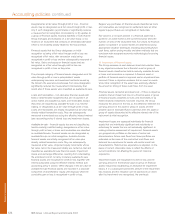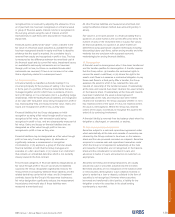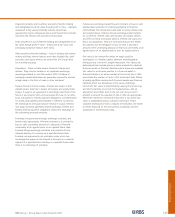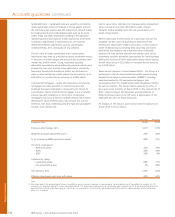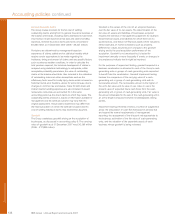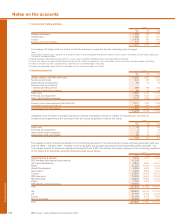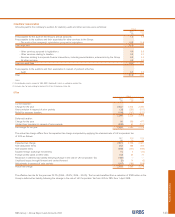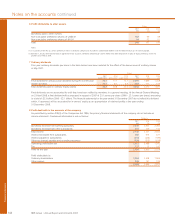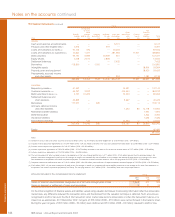RBS 2007 Annual Report Download - page 139
Download and view the complete annual report
Please find page 139 of the 2007 RBS annual report below. You can navigate through the pages in the report by either clicking on the pages listed below, or by using the keyword search tool below to find specific information within the annual report.
137
RBS Group • Annual Report and Accounts 2007
Financial statements
The Group’s valuation of the super senior asset-backed CDO
exposures takes into consideration outputs from a proprietary
model, market data and appropriate valuation adjustments.
There is significant subjectivity in the valuation with very little
market activity to provide support for fair value levels at which
willing buyers and sellers would transact.
The Group’s proprietary model predicts the expected cash
flows of the underlying mortgages using assumptions about
future macroeconomic conditions (including house price
appreciation and depreciation) and defaults/delinquencies on
these underlying mortgages derived from publicly available
data. The resulting cash flows are discounted using a risk
adjusted rate.
Alternative valuations have been produced using reasonably
possible alternative assumptions about macroeconomic
conditions including house price appreciation and depreciation,
and the effect of regional variations. In addition, the discount
rate applied to the model output has been stressed. The output
from using these alternative assumptions has been compared
with inferred pricing from other published data.
The Group believes that reasonably possible alternative
assumptions could reduce or increase predicted cumulative
losses from the model by up to 20%. Using these alternative
assumptions would reduce the fair value by up to £385 million
or increase the fair value by up to £235 million.
Other debt securities – where observable market prices for a
particular debt security are not available, the fair value will
typically be determined with reference to observable market
transactions in other credit related products including debt
securities and credit derivatives. Assumptions are made about
the relationship between the individual debt security and the
available benchmark data. Using differing assumptions about
this relationship would result in different fair values for these
assets. Using reasonably possible alternative assumptions for
credit spread (taking into account the underlying currency,
tenor and rating) would reduce the fair value by up to £88
million or increase the fair value by up to £109 million.
Derivatives – derivatives are priced using quoted prices for the
same or similar instruments where these are available.
However, the majority of derivatives are valued using pricing
models. Inputs for these models are usually observed directly
in the market, or derived from observed prices. However, it is
not always possible to observe or corroborate all model inputs.
Unobservable inputs used are based on estimates taking into
account a range of available information including historic
analysis, historic traded levels, market practice, comparison to
other relevant benchmark observable data and consensus
pricing data. Using reasonably possible alternative
assumptions, principally correlations, including the relative
impact of unobservable inputs as compared to those which
may be observed, would reduce the fair value by up to £80
million or increase the fair value by up to £80 million.
Other portfolios – other than the portfolios discussed above,
there are other financial instruments which are held at fair
value determined from data which are not market observable,
or incorporating material adjustments to market observed data.
Using reasonably possible alternative assumptions appropriate
to the financial asset or liability in question, such as credit
spreads, derivative inputs and equity correlations, would
reduce the fair value by up to £119 million or increase the fair
value by up to £117 million.



